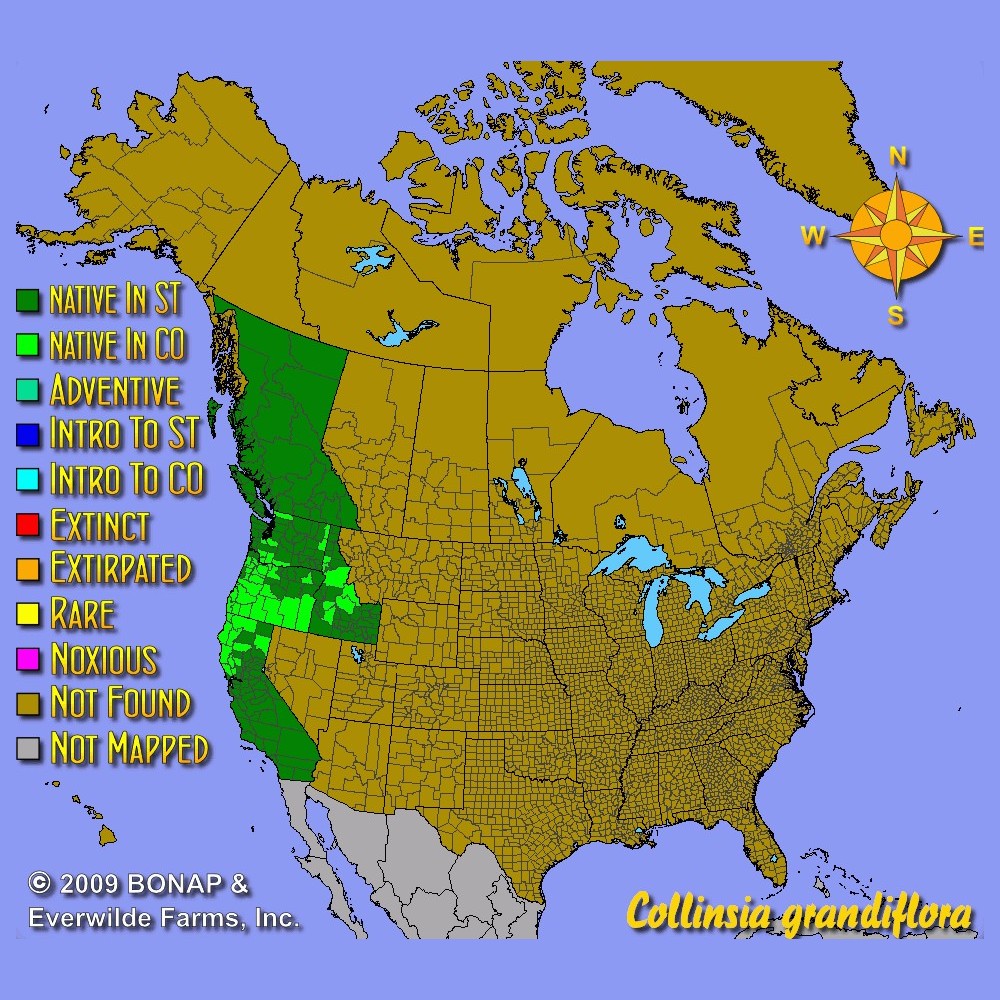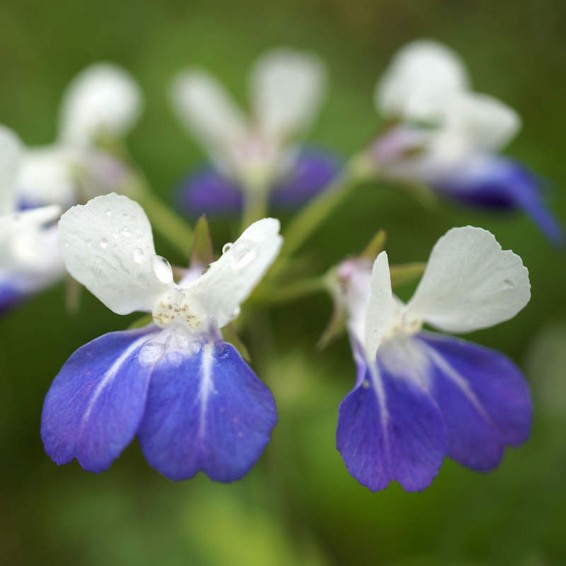Blue Eyed Mary Seeds
Collinsia grandiflora
- HOW TO GROW
- FAST FACTS
HOW TO GROW
Sowing: Direct sow on the surface of the soil in late fall, pressing the soil down firmly for good seed-to-soil contact. This seed can also be sown in early spring, though germination may be slow and irregular. Thin or transplant seedlings.
Growing: This plant adapts well to rocky or coarse soil. Water seedlings regularly until they become established, keeping weeds down to a minimum to avoid competition. Mature plants also appreciate occasional watering; though they can survive short dry periods, they do not tolerate drought well. This plant grows best in moderate climates and does not do well with excessive heat.
Harvesting: This delicate wildflower is best displayed in the garden or prairie, and does not make a suitable cut flower.
Seed Saving: After flowering, the plant will produce tiny seed pods with ripe reddish brown seed. Watch the pods closely, since they will soon split and drop their seeds. Though the pods can be gathered individually as they ripen, an easier method is to pull the entire plant when the majority of the seed pods have ripened; hang it upside down in a protected area where the seeds can safely fall. When the plant has dried completely, thresh the pods that have not split open to remove the rest of the seed. Store the cleaned seed in a cool, dry place.
FAST FACTS
Common Names: Giant Blue-eyed Mary, Large-flowered Collinsia, Blue Lips, Blue-lips Blue-eyed Mary
Latin Name: Collinsia grandiflora
Species Origin: US Native Wildflower
Type: Native Wildflowers
Life Cycle: Annual
USDA Zones: 3, 4, 5, 6, 7, 8, 9, 10, 11, 12
US Regions: California, Mountain, Arid/Desert, Plains/Texas, Midwest, Northern, Northeast, Southeast
Seeds per Ounce: 9,000
Stratification: No Stratification
Germination Ease: No Stratification
Sunlight: Part Sun
Height: 16 Inches
Color: Blue
Bloom Season: Blooms Early Spring, Blooms Late Spring
DESCRIPTION

HOW TO GROW
Sowing: Direct sow on the surface of the soil in late fall, pressing the soil down firmly for good seed-to-soil contact. This seed can also be sown in early spring, though germination may be slow and irregular. Thin or transplant seedlings.
Growing: This plant adapts well to rocky or coarse soil. Water seedlings regularly until they become established, keeping weeds down to a minimum to avoid competition. Mature plants also appreciate occasional watering; though they can survive short dry periods, they do not tolerate drought well. This plant grows best in moderate climates and does not do well with excessive heat.
Harvesting: This delicate wildflower is best displayed in the garden or prairie, and does not make a suitable cut flower.
Seed Saving: After flowering, the plant will produce tiny seed pods with ripe reddish brown seed. Watch the pods closely, since they will soon split and drop their seeds. Though the pods can be gathered individually as they ripen, an easier method is to pull the entire plant when the majority of the seed pods have ripened; hang it upside down in a protected area where the seeds can safely fall. When the plant has dried completely, thresh the pods that have not split open to remove the rest of the seed. Store the cleaned seed in a cool, dry place.
FAST FACTS
Common Names: Giant Blue-eyed Mary, Large-flowered Collinsia, Blue Lips, Blue-lips Blue-eyed Mary
Latin Name: Collinsia grandiflora
Species Origin: US Native Wildflower
Type: Native Wildflowers
Life Cycle: Annual
USDA Zones: 3, 4, 5, 6, 7, 8, 9, 10, 11, 12
US Regions: California, Mountain, Arid/Desert, Plains/Texas, Midwest, Northern, Northeast, Southeast
Seeds per Ounce: 9,000
Stratification: No Stratification
Germination Ease: No Stratification
Sunlight: Part Sun
Height: 16 Inches
Color: Blue
Bloom Season: Blooms Early Spring, Blooms Late Spring




